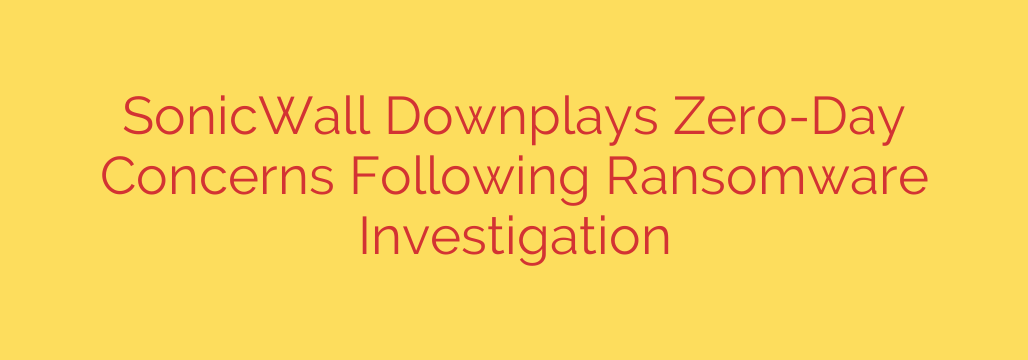
SonicWall Vulnerabilities and Ransomware: A Closer Look at the Real Threat
Recent reports have surfaced linking SonicWall devices to targeted ransomware attacks, sparking concern among network administrators about a potential zero-day vulnerability. However, a thorough investigation into these incidents has revealed a different, yet equally critical, security lesson.
Contrary to initial fears, the security incidents were not the result of an unknown or unpatched ‘zero-day’ exploit. Instead, the evidence strongly suggests that the attacks exploited previously disclosed vulnerabilities for which patches were already available. This distinction is crucial for understanding the true nature of the threat and how to defend against it.
The True Culprit: Unpatched Systems
The investigation specifically points to compromises in SonicWall Secure Mobile Access (SMA) 100 series appliances. These devices are popular gateways for providing employees with remote access to corporate networks, making them a high-value target for cybercriminals.
The core issue is not a new flaw in SonicWall’s code, but rather a failure in basic security maintenance. Threat actors are actively scanning for and targeting devices that have not been patched against older, known security flaws. By successfully exploiting these unpatched systems, they can gain a foothold within a network, escalate privileges, and ultimately deploy ransomware to encrypt critical data.
This pattern highlights a common tactic used by malicious actors: they rely on the fact that many organizations are slow to apply security updates, leaving a wide-open door for attack long after a fix has been released.
Essential Security Measures to Protect Your Network
This situation serves as a critical reminder for all network administrators. Protecting your infrastructure from these types of attacks requires a proactive and disciplined approach to security. Here are the essential steps you must take:
- Patch Immediately: The single most effective defense is to ensure all your SonicWall devices are running the latest firmware. Do not delay applying security patches. Check the official SonicWall security advisories regularly and update your systems as soon as a patch is released.
- Enable Multi-Factor Authentication (MFA): MFA adds a critical layer of security that can prevent unauthorized access even if user credentials are stolen. Implementing MFA on all remote access accounts, especially for administrators, is non-negotiable.
- Restrict Management Access: Limit access to your firewall and SMA appliance’s management interface. Configure firewall rules to ensure it can only be reached from a trusted set of internal IP addresses, preventing external actors from even attempting to log in.
- Review and Monitor Logs: Regularly review access and administrative logs for any unusual or suspicious activity. Look for repeated failed login attempts, logins from unfamiliar geographic locations, or changes to system configurations made at odd hours.
The Persistent Danger of Known Vulnerabilities
This incident is a powerful reminder that the biggest threats to an organization’s security often aren’t novel zero-day exploits, but well-documented vulnerabilities that organizations have failed to address. Threat groups maintain extensive databases of these known flaws and continuously scan the internet for vulnerable targets.
Proactive security hygiene is not optional—it is essential. While the specter of a sophisticated zero-day attack is alarming, the reality is that maintaining a disciplined patch management schedule and implementing security best practices remains the most robust defense against the vast majority of cyberattacks. Ensure your systems are updated, your access controls are strong, and your security posture is always active, not reactive.
Source: https://securityaffairs.com/180940/security/sonicwall-dismisses-zero-day-fears-after-ransomware-probe.html








